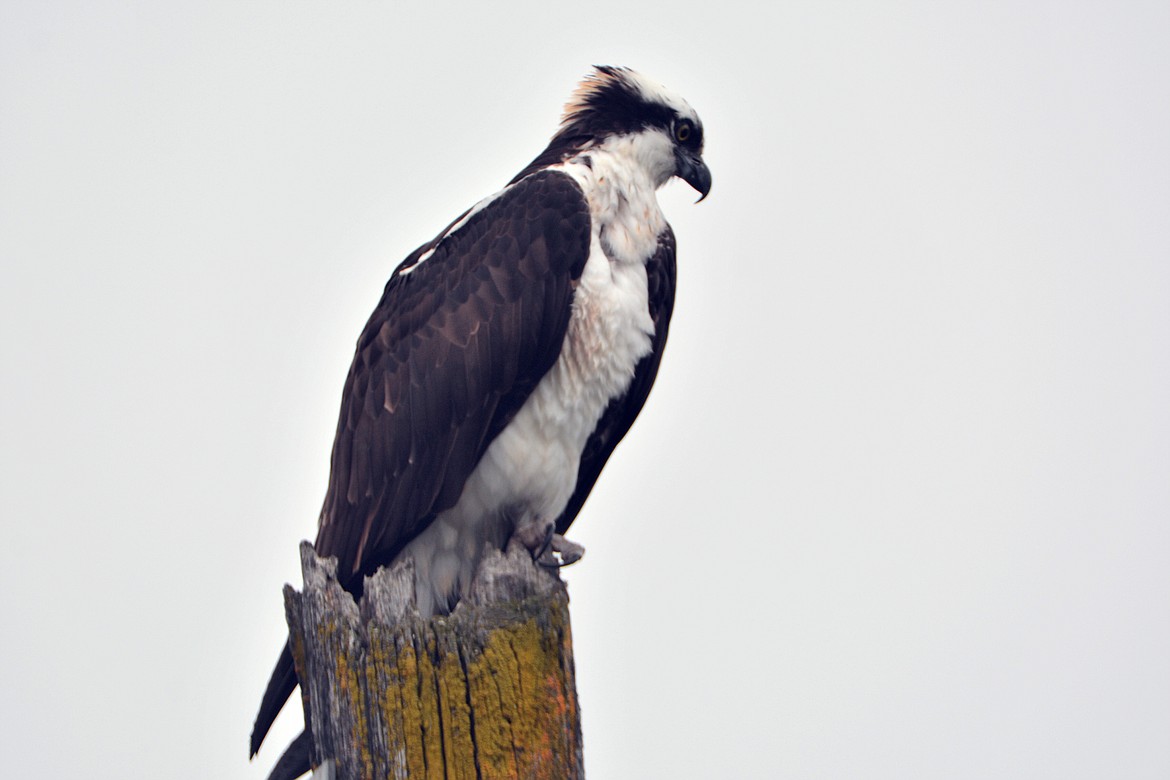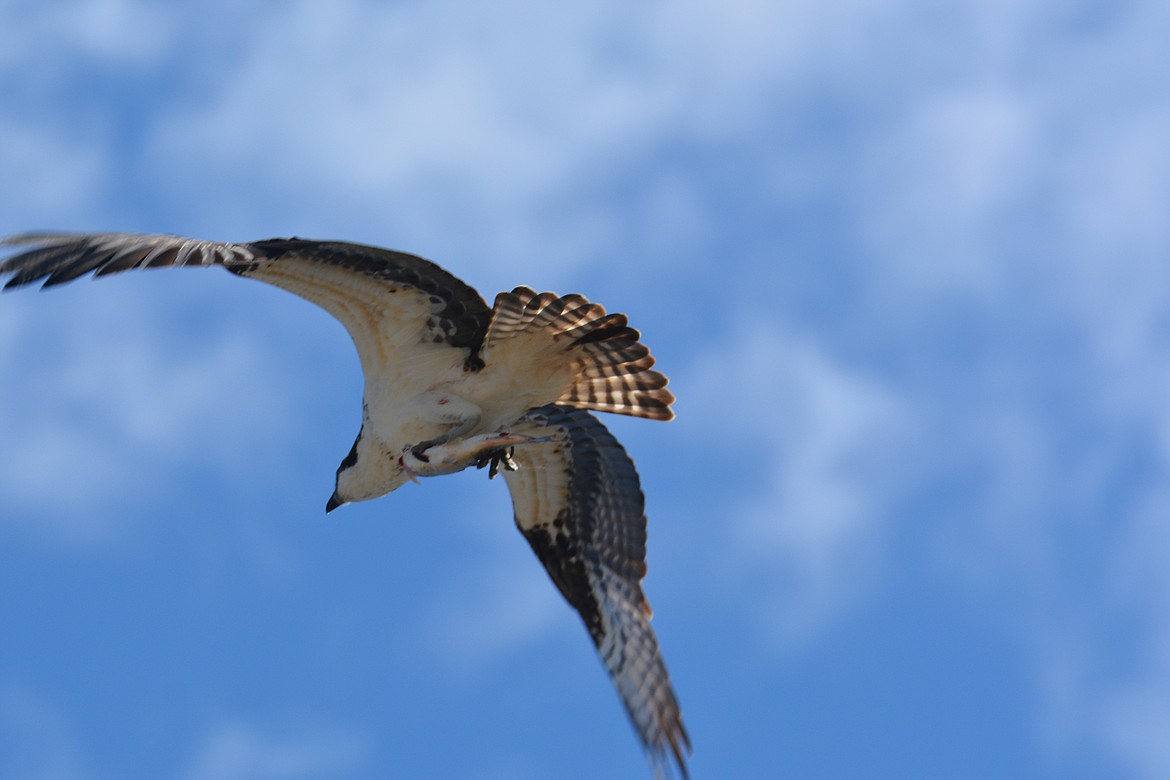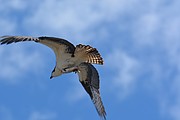Osprey: The fisherman with wings!
Osprey (Pandion haliaetus) are in a family all their own. It is the only raptor that plunges into water feet first to catch fish.
— Birds of Idaho Field Guide
Recently I was traveling east of Ambush Rock and pulled off at the sheriff’s emergency dock west of the Boundary County fairgrounds when a bird attracted my attention, not only because of its size but the fact he was carrying a sizeable fish in his talons. Because of the rare sight I parked my vehicle and watched him fly overhead and east along the Kootenai River and eventually landing on a pole beside the river as my camera was clicking away.
The osprey noticed two other nearby osprey and adjusted the fish in his talons and sprung from the top of the pole flying east up the river. He flew over the Kootenai River bridge struggling with the weight of his precious cargo and then out of sight.
It was a welcome occurrence, to witness the return of ospreys to the area river banks and shorelines. In many places, their homecoming or a nearby nesting pair symbolizes luck. In Boundary County we are fortunate to have a good number of nesting osprey.
The male osprey is a large, eagle-like bird with a white chest and belly, and a nearly black back. He has a white head with a black streak through the eyes, large wings with black “wrist” marks and a dark bill. The osprey can grow up to a 5½-foot wing span.
The female has the same characteristics as the male, but is larger, with a necklace of brown streaking. The juveniles are similar to the adults, with a light tan breast.
The osprey’s nest is a raised level surface, often on a wooden platform at the top of a pole or tree that the male and female build or add to each year.
Ospreys, or fish hawks as they are often referred to, nest atop trees or manmade structures like utility poles, bridges or any high spot away from predators. Their nest can weigh 400 pounds, made of found-object art installations crafted of sticks, moss, bones and quite possibly toys. Unfortunately, ospreys also gather trash such as six-pack carriers, twine and fishing line, which can cause strangling or starvation of birds. And because they are loyal in returning to the same nest-and the same mate-each year, osprey may add so much material that nests can potentially collapse under their own weight.
Fish make up 99 percent of the osprey’s diet. It typically takes fish weighing between 5-10 ounces and 9 to 14 inches in length, but the weight can range from 5 ounces to 4.5 pounds. Virtually any type of fish in that size range can be taken.
An osprey has vision that is well adapted to detecting underwater objects from the air. Prey is first sighted when the osprey is 30-130 feet above the water, after which the bird hovers momentarily then plunges feet first into the water.
Clearly one of the distinct characteristics of the osprey is his artful angling ability and to be able to hover and soar over a body of water until their prey is spotted and then the ability to crash into the water at 30 miles per hour. Sometimes the skillful fisherman is completely submerged as he secures his fish. Their success is nearly certain; largely due to spiky scales on their talons and an opposable toe they can rotate to allow them a two-toed grip on either side of a fish. They will carry fish weighing half their weight, rotating the fish so its head faces forward for streamlined flight.
Ospreys usually mate for life. Rarely will an osprey have more than one mate. In spring, following the breeding season the pair begins a five-month period of partnership to raise their young. The female lays two to four eggs within a month and relies on the size of the nest to conserve heat. The eggs are whitish with bold splotches of reddish-brown and are about 2.4 inches x 1.8 inches and weigh about 2.3 ounces. The eggs are incubated for about 5 weeks before hatching. Both male and female incubate.
Enjoy the outdoors and the wildlife of Boundary County!



